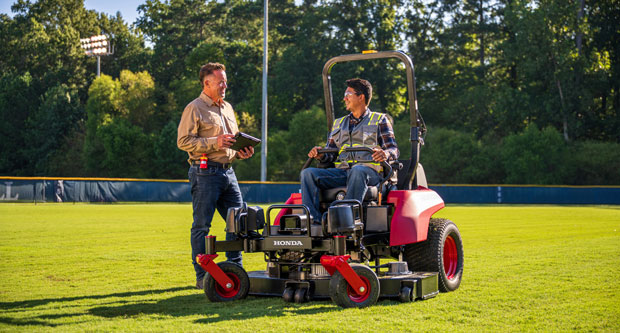By: Andrew Greess
Safety is not just a good idea, it’s a great investment. Inattention to safety has huge financial implications: increased expenses (worker’s comp, clean ups, medical bills, lawsuits, repairs, etc.), lost productivity, employee turnover, customer impacts, bad publicity and more.
Vehicle load safety in particular includes:
- visibility;
- load security;
- flying objects; and
- vehicle control and stability.
I raise this issue because our repair facility has seen an increase in the number of totaled trucks. I am not sure of the reason for this. Some possibilities:
- Smaller trucks (easier to total in an accident)
- More equipment in truck
- More traffic
- More time on the road
- More bad drivers (at least in Phoenix!)
These accidents have caused us to think about what our customers can do to protect themselves, their employees, and their companies. Here are some ideas.
- Make sure there’s visibility. Equipment should not create blind spots for the driver.
- Make sure it’s secured. You don’t want equipment sliding around in the back of your truck. It is dangerous to the driver, distracting and can damage your expensive equipment.
- Don’t assume it’s attached. You don’t want equipment flying off your truck crashing into people and property. Even if the accident wasn’t your fault (or your employee’s fault), if your equipment hits someone, a lawyer willsue you. Periodically check your equipment to ensure it’s secured to your truck. For example:
- Spray rig – Is it securely bolted to the truck? Are bolts tight? Is the correct fastening system being used? For example, are the Nylock nuts unlikely to come loose?
- Tank – Are the tank straps intact? Snug? Secure? Do they show any signs of wear? Perform a thorough inspection periodically. You do not want a tank flying off your truck, becoming a water-filled projectile. A 50-gal. tank weighs more than 400 lbs. when full. It will destroy whatever it hits.
- Tool box – Tool boxes are usually bolted through the bottom of the tool box to the truck. Inspect for rust, fatigue or other wear around the bolts. If the material around the bolts is weak, in the event of a crash, the box may fly off.
- Backpack sprayers – Most of our clients put these in a snug place in the truck. They are prevented from rolling around, but they are not secured from being launched should an accident occur. A 4-gal. sprayer hitting another car’s windshield at 60 mph will not be pretty. Secure these items appropriately. As a side benefit, this could also help reduce theft.
4. Make sure it’s stable. This is particularly important as companies shift to smaller trucks to improve gas mileage. Some ideas:
- Don’t overload the vehicle.
- Balance the load.
- Pay particular attention to your water tank. At 8.4 pounds per gallon, the water in your tank is likely the heaviest component on your truck. There are two issues with the tank: the weight of the water and the surge of the water in the tank. Anyone who has hit the brakes at an intersection with a partially full water tank knows that these are serious issues.
The answer to the water weight issue is don’t overload the truck. In other words, make sure the tank is not too large to safely control the vehicle.
The challenge of tank surge is that most tanks are not properly baffled to reduce the surge. Most plastic (poly) tanks are not baffled at all, and most fiberglass and steel tanks, if baffled, are baffled only in one dimension. There is a new class of surge buster tank baffles that can be added to the tank at any time. These baffles suppress surge on all three axes (left-right, front-back, up-down) to virtually eliminate surge. This makes the vehicle much easier to control and stop.
Conduct these inspections periodically to ensure you and your employees are being as safe as possible to protect your business.

